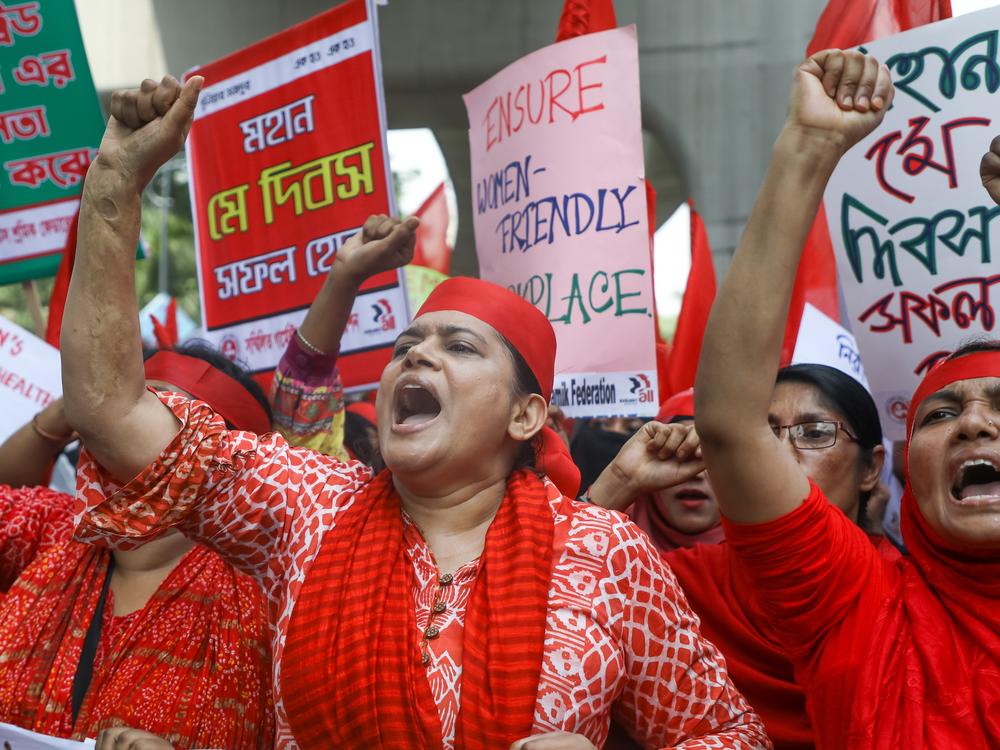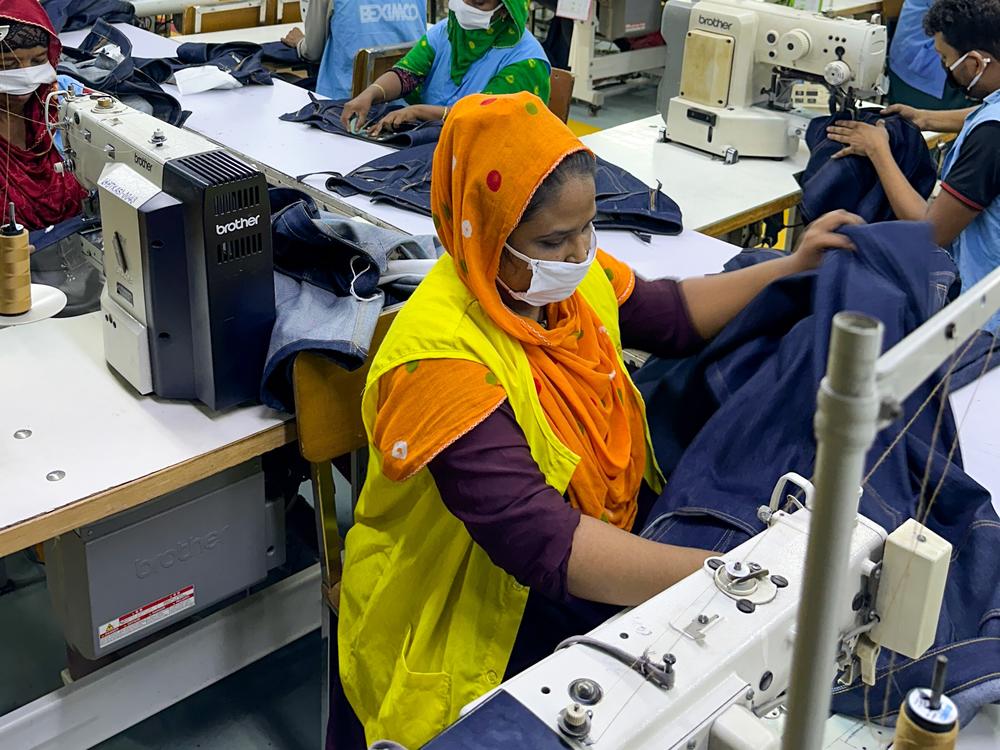Section Branding
Header Content
Why the garment workers of Bangladesh are feeling poorer than ever
Primary Content
Ayesha Begum is working hard on her sewing machine. Her slender fingers glide the needle along the jeans she is piecing together, sewing on pockets before passing the pants to the next garment worker. It’s for the international clothing chain, Zara. The jeans will sell for around $50 each. She handles around 90 pairs an hour and earns $134 a month.
“I can’t get by on what I earn,” she says, “I have to pay for my son’s schooling, I have to pay rent, I have to look after my mother and my parents-in-law. It’s just not enough.”
Begum, 26, lives in the town of Gazipur, a few hours north of Bangladesh’s capital, Dhaka. She and her husband work at Beximco, one of the largest garment factories in the country, employing 23,000 workers. But even with their combined income, they find it hard to make ends meet.
Begum one of four million garment workers in Bangladesh making clothes for American and European markets – brands such as Michael Kors, Calvin Klein, Zara and others. Zara did not respond to NPR’s requests for comment on this story.
Bangladesh is the second largest export of readymade garments in the world after China, with 4,000 or so garment factories that generated $47 billion in revenue last year.
The country’s garment workers have always been paid low wages, but now they’re facing a triple-barreled threat. Western buyers are paying less for the clothes, while food prices in the country have gone up by around 10% since last year.
Khaled Shahrior, a manager at Beximco, says retailers aren’t concerned with paying more for garments to address the increased costs most local factories are bearing.
“They don’t bother about everyday inflation and food prices and everything,” he says, “they should have that accountability.”
Politics has an impact
Added to this, the industry has also suffered after a wave of political unrest. In August, former prime minister Sheikh Hasina fled the country following a student uprising. At least four factories were set on fire, including Beximco, after the factory owners were accused of having close ties with Hasina and her government.
The instability has resulted in a loss of business for the industry as some brands have taken their business to other countries.
Mushfiq Mobarak, professor of economics at Yale University, says those brands are, in fact, now paying higher prices.
“In those other countries they’re actually paying around 20% more,” he says, “so that suggests that they can afford to pay, it’s just that when they’re sourcing from Bangladesh, they’re not willing to.”
Union leaders and workers hope the recent political changes will lead to improvements in their conditions.
T-shirts sell for less
But at the moment, it’s harder than ever for garment workers like Begum to get by.
According to the U.S. International Trade Commission, the average price American retailers paid two years ago for a cotton t-shirt made in Bangladesh was $1.83. This year, it’s $1.65 – nearly a 10% drop.
One reason is increased competition among factories in Bangladesh to sell their wares, so prices are dropping.
At the same time, the country is experiencing a wave of inflation that has meant greater expenses for the workers in their daily lives — and for factories as well.
Economist and nobel laureate Mohammad Yunus is serving as the chief adviser for Bangladesh’s caretaker government.
Mobarak says that Yunus has an opportunity to use his influence to protect workers’ rights.
“He could use his voice effectively to bring international buyers to the table and help them recognize their ethical obligations toward poor Bangladeshi workers,” he says.
So far, Yunus has not publicly addressed this issue.
They're protesting
Meanwhile, since the uprising, some garment workers have been protesting for higher pay.
Union leader Kalpana Akter says a raise in the minimum wage to 12,500 taka ($104) last year – up from 8,000 taka ($69) – didn’t go far enough. And that there isn’t universal compliance.
“It is not enforced in many factories.” she says.
Even those who make slightly more than minimum wage are struggling.
Iti khatun, 44, who has been a garment worker for 22 years, earns $126 a month, sometimes more if overtime is available.
She pays $25 a month for rent and household bills such as gas and electricity.
She lives in a dimly lit windowless room in a large, crumbling building and shares a bathroom and kitchen with a dozen other residents.
Another $30 goes toward her 18-year-old son’s schooling. She spends the rest on food, but with one kilo of rice — 2.2 pounds — costing as much as a dollar, she has to stick to a basic diet.
“Meat costs 6 dollars a kilo,” says Khatun. "If I eat meat, it will be too difficult for me to budget for the rest of the month.”
And she’s aware of the irony that she could never afford the clothes she makes.
Mobarak says Western consumers need to be more aware of the impact of their shopping habits.
“They need to understand the decisions they make,” he says, “such as going to another retailer to chase lower prices, ultimately will have an effect on the wages paid to the workers who produce those garments.”
NPR contacted the Ministry of Labour and the Bangladesh Garments Manufacturers and Exporters Association, which represents the factories, for comment but got no response.
Begum, the 26-year-old who sews pockets on jeans, has a simple wish: "If I could earn a bit more money I could plan for my son's future. I'd be able to save, to live better, eat better. Even 3,000 taka [$25] more a month would make a big difference."
Shamim Chowdhury is a London-based freelance journalist and writer. She spent six weeks in Bangladesh following the recent student uprising.
Bottom Content


